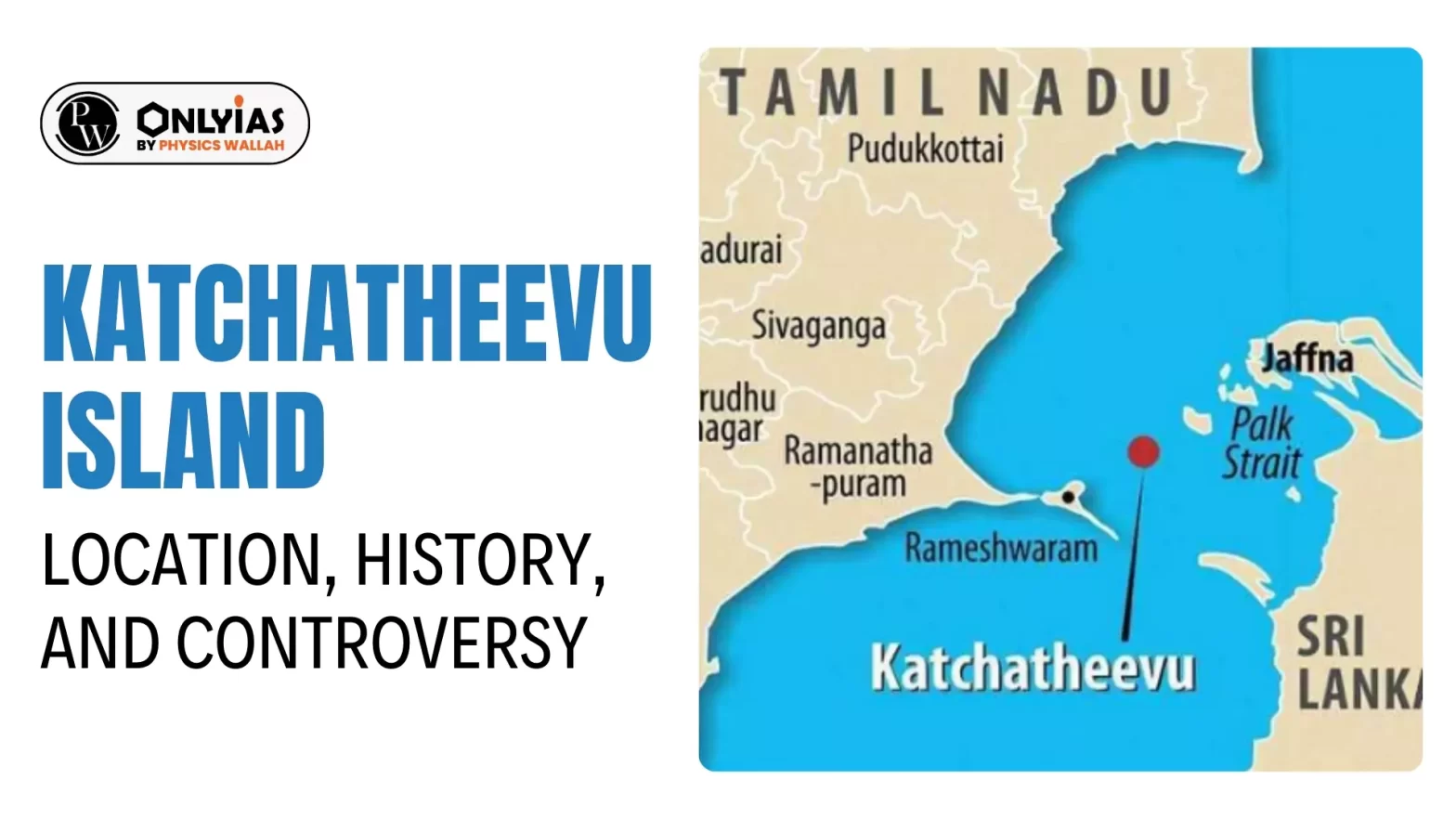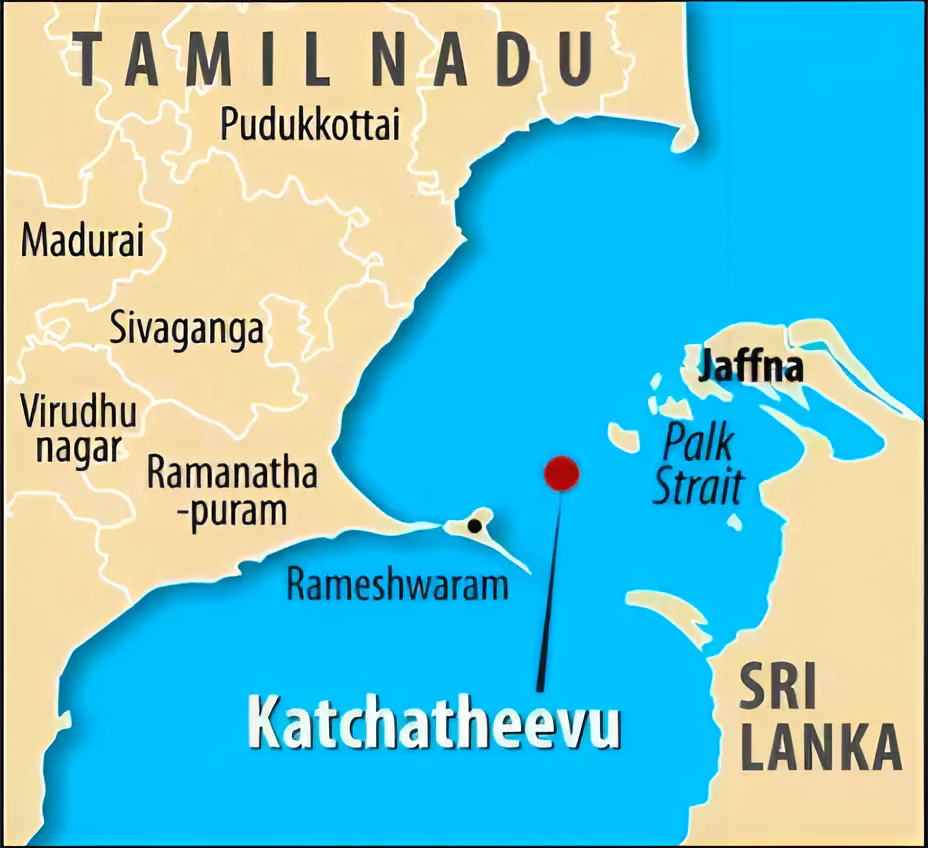![]() 1 Apr 2024
1 Apr 2024

Recently, the Minister of External Affairs declared a statement regarding the rights of Indian fishermen on Katchatheevu Island.
| Relevance For Prelims: Geographical location, Indo-Sri Lanka 1974 and 1976 Agreement
Relevance for Mains: Fishermen issue, And issues pertaining to regulations of the Island |
|---|

Katchatheevu Island Map
| Prelims PYQ (2014):
Which one of the following pairs of islands is separated from each other by the ‘Ten Degree Channel’? (a) Andman and Nicobar (b) Nicobar and Sumatra (c) Maldives and Lakshadweep (d) Sumatra and Java Ans: (a) |
|---|
| Must Read | |
| NCERT Notes For UPSC | UPSC Daily Current Affairs |
| UPSC Blogs | UPSC Daily Editorials |
| Daily Current Affairs Quiz | Daily Main Answer Writing |
| UPSC Mains Previous Year Papers | UPSC Test Series 2024 |

<div class="new-fform">
</div>